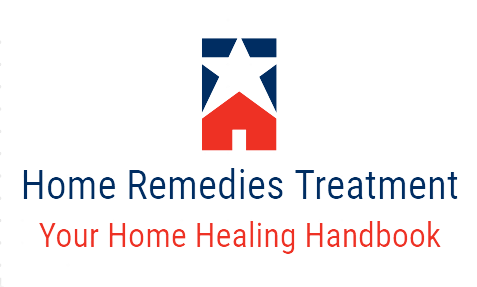Summary
Asthma is a respiratory disease that causes the narrowing of the air passages (bronchi) in the lungs. It is a chronic health condition and can be passed down genetically.
In this disease, air share various hormones viz. Very sensitive to pollen, manure, cockroach droppings, dust, cat or dog hair, infections, and irritants (pollution, various chemicals, strong-smelling perfumes or dyes, tobacco, climate change, exercise, medications containing aspirin, artificial sweeteners).
The muscles in and around the airways contract when exposed to allergen hormones, causing symptoms such as shortness of breath, coughing, chest tightness, and wheezing.
Asthma is common in children who are allergic to indoor allergens (bedding, carpet, pollen, pet dust), causing frequent episodes of illness and absenteeism from school. As there is no cure for asthma, treatment focuses on immediate relief between acute attacks and reducing the frequency of acute attacks.
Inhaled steroids, bronchodilators (medicines that open the airways by relaxing the muscles), and anti-inflammatories are commonly advised in asthma. making a plan for medications, and breathing exercises can help a lot in dealing with asthma.
 |
| Asthma Home Remedy |
Home remedies for Asthma
1) Garlic -
Garlic is very useful for asthma. Boil five cloves of garlic in 30 ml of milk. Consuming this blend everyday is extremely useful in the beginning stage of asthma.
2) Ginger -
Adding two cloves of garlic in hot ginger tea and drinking it in the morning and evening is also beneficial.
3) Ova -
Boiling ova in water and steaming it is also beneficial in the early stages.
4) Fenugreek –
Boil fenugreek seeds in water. Drinking it with ginger juice and honey helps in treating asthma.
5) Honey -
Honey is considered very beneficial for asthma. A little honey should be placed under the nose of a patient with asthma. Air comes in contact with honey during inhalation. At that time, while inhaling the air, honey provides relief from asthma attacks.
6) Cloves -
Boil 4 to 5 cloves in 125ml water for 5 minutes. Filter this mixture and add honey to it and drink this hot decoction two to three times daily.
7) Fenugreek leaves -
Put fenugreek leaves in water and boil it. Drinking cold water with salt, black pepper powder and lemon juice is very effective in treating asthma.
 |
| Symptoms of Asthma |
Symptoms of Asthma
Asthma symptoms are mainly due to the narrowing of the air passages in the lungs, eg;
Shortness of breath- People with asthma commonly experience shortness of breath, shortness of breath, or wheezing, especially during an asthma attack.
Whistling sound- A high-pitched shrill noise is created due to the resistance of the narrow air passages to the airflow. In milder asthma, a person makes a wheezing sound when they exhale. In severe asthma, wheezing occurs even when the person breathes. In severe and acute cases, the airways are so obstructed and narrowed that no whistling sound is heard at all.
Whistling sound Other health problems eg. It occurs in cystic fibrosis, heart failure and vocal failure. Therefore, a solid diagnosis of asthma should be made through various investigations.
Cough- The most prominent symptom of asthma, especially exercise-induced and nocturnal asthma, is cough. It is dry and does not leak.
Chest tightness- In asthma, especially exercise-induced and nocturnal asthma, chest tightness or pain is sometimes the only visible symptom of asthma.
.Treatment of Asthma
Treatment focuses on immediate relief during acute attacks and long-term management to reduce the frequency of acute attacks.
Immediate relief (relaxation drugs)
These are also called rescue medications and are used to provide immediate relief from distressing asthma symptoms. Doctors usually recommend taking these medications before exercise, as a severe flare-up of symptoms occurs after exercise (exercise-induced asthma)
e.g. Running or cold weather activities (skiing, ice skating, ice hockey). Immediate-relief medications work by relaxing the soft muscles in and around the air passages, opening the constricted passages quickly and relieving discomfort.
Short-acting beta agonists are the first choice of preventive medicine for rapid relief of unpleasant symptoms of an acute asthma attack. Medicines that are inhaled through this breath, open the airways quickly.
Doctors recommend albuterol, levabutrol, and pyrbuterol. Long-term asthma management medications should not be stopped while taking reliever medications. If quick-relief medication is needed more than twice a week, a doctor must be notified.
Long-term control (control drugs)
Inhaled corticosteroids
They are the first choice in the long-term treatment of asthma. They reduce inflammation in the airways, resulting in reduced airway inflammation (eg, fluticasone, budesonide, mometasone, beclomethasone, and prednisolone).
Inhaled corticosteroids and long-acting beta agonists
Long-acting beta agonists (LABAs) relax smooth muscle, exposing the airways. Sometimes, they are used in the treatment of exercise-induced and nocturnal asthma.
However, doctors recommend LABAs along with inhaled steroids for long-term treatment of asthma.
Adjustments are also used when early-acting beta-agonists and inhaled steroids fail to relieve acute seizure symptoms.
Some examples of combinations are fluticasone and salmeterol, fluticasone and vilanterol, budesonide and formoterol.
Long-acting anticholinergics
These medications are to be inhaled and are used as supportive medications to relax the smooth muscles in the airways. These include tiotropium and ipratropium.
Doctors sometimes advise the combination of two anticholinergic drugs to increase the effect of the drug.
Methylxanthine
Methylxanthine drugs, such as theophylline, for nocturnal asthma The most prominent symptom is cough. It is dry and does not leak.
Chest tightness
In asthma, especially exercise-induced and nocturnal asthma, chest tightness or pain is sometimes the only visible symptom of asthma.
Events are used to avoid.
Leukotriene receptor or leukotriene converter
These are oral medicines that relieve dandruff, inflammation, and swelling in the airways. These include montelukast and zafirlukast.
Mast cell Stabilizer
These help to reduce inflammation and control acute asthmatic episodes caused by exposure to cold air or exercise (eg, cromolyn sodium).
Resistance therapy or immunomodulators
These are injectable medications that prevent asthma caused by exposure to pollen, manure, dust, and animal dander. Omalizumab contains anti-IgE monoclonal antibodies, which control the body's allergic response to the allergen. Other examples are reslizumab and benralizumab.
Bronchial thermoplasty
It is a method currently approved by the FDA (Food and Drug Administration) to treat severe asthma in adults who have not benefited from medical treatment. Heat energy is generated by releasing controlled radio waves through the airways and destroys the smooth muscles of the airways.
Destruction of the smooth muscles of the airways alters the resistance system, reducing airway constriction.
Lifestyle management
Asthma is still an incurable disease and a major cause of discomfort among the Runas, as they experience irregular attacks of breathlessness and distressing symptoms of chest tightness and shortness of breath.
Therefore, patients' normal routines are disrupted leading to reduced work productivity and significant economic losses. Treatment aims, therefore, to reduce the severity and frequency of acute episodes and to prevent further adverse effects such as lung damage, infection, or death.
A key component in asthma management is self-care. A thorough understanding of the disease and hormones can prevent acute attacks.
Information about effective control of acute seizures (eg, use of medication flowcharts) also helps patients cope with emergencies. Also, if the child has asthma, an action plan should be prepared with the doctor's advice, which can be implemented in cases of acute attacks and is very helpful.
Anxiety is similar to a behavioral change in people diagnosed with asthma. It is an important factor in triggering acute asthma attacks.
Pranayama, meditation, yoga, and other calming exercises can provide long-term success in dealing with asthma-related fears and anxieties.
Training in various breathing techniques e.g. Breathing techniques help to overcome mental stress and normalize the breathing process in irreversible acute episodes of asthma.
Asthma management can be strengthened through these and other lifestyle changes, such as regular moderate exercise such as walking, quitting smoking, and eating a healthy, nutritious diet.




















0 Comments